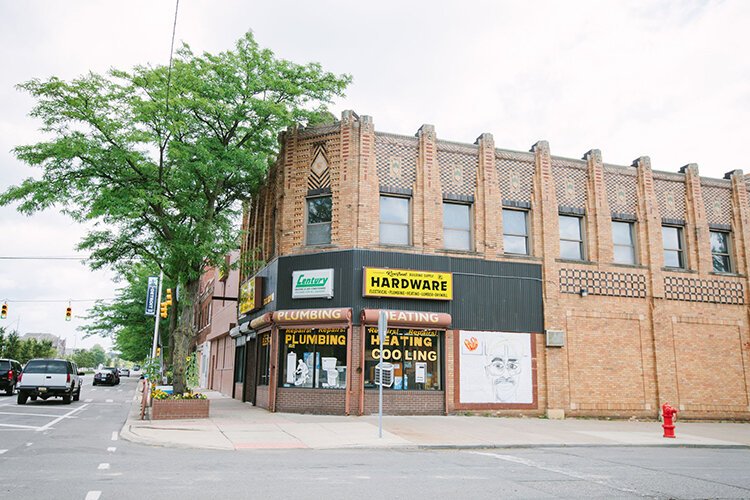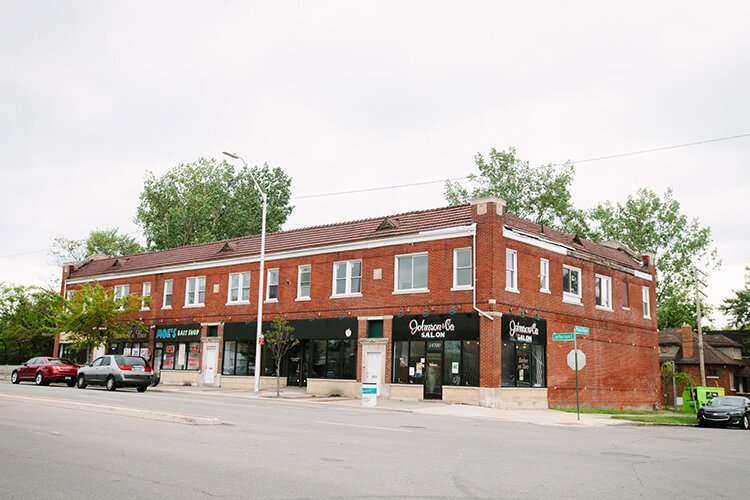Jefferson Chalmers residents weigh in on revitalization plan
The initial draft of "Building Jefferson-Chalmers Together, a Jefferson-Chalmers Mainstreet Master Plan” was unveiled at Hope Community Church on Aug. 30 after a week of visioning workshops held between residents and Jefferson East, Inc., a community nonprofit and its for-profit development subsidiary, East Jefferson Development Corporation, or EJDevCo.
A full-service, budget-friendly grocery store. Choices in dining, soul food for sure. Crosswalk indicators, protected bike lanes, speed bumps for safer streets. A coffee shop, retail stores and an affordable recreation center. A first-run movie theater you can walk to.
These are some of the community wants that rose to the top as residents of Jefferson Chalmers contributed recently toward a master plan of revitalization to their East Jefferson business district.
The initial draft of “Building Jefferson-Chalmers Together, a Jefferson-Chalmers Mainstreet Master Plan” was unveiled at Hope Community Church on Aug. 30 after a week of visioning workshops. These were held between local residents and Jefferson East, Inc., a community nonprofit, and its for-profit development subsidiary, East Jefferson Development Corporation, or EJDevCo. About 600 residents participated in the engagement sessions.
“Part of what we’re doing, and what our design team is doing, is trying to figure out, based on the money that’s available, what things we can create that would satisfy the residents’ needs,” says Marques King, economic development and design manager at Jefferson East, Inc. “It’s sort of a give and take.”
King says the planning team will polish Friday’s draft over the next week and make it accessible to the public on the plan’s website. In the month to follow, they’ll continue to brainstorm on how to best incorporate and prioritize new community feedback, measuring it against budgets and timelines, with a goal to produce a master plan for the corridor by mid-October.
The current draft indicates several streetscape improvements along Jefferson Avenue to create a Main Street feel. This includes decreased traffic lanes, enhanced pedestrian crossing, protected bike routes, bus boarding islands, a permanent landscaped median and parking on both sides of the street.
Smaller rehab projects will lead into larger developments like the mixed-use space planned for East Jefferson and Piper, and the stabilizing and redeveloping of beloved buildings like the Vanity Ballroom. The art deco gem that hosted greats like Duke Ellington and Benny Goodman will offer space to commercial retailers on the ground floor, but residents were adamant that the second-floor ballroom would remain an open community space. Possibilities include a venue for neighborhood gatherings, theatrical plays, weddings or a maybe a one-screen movie theater.
“That was one that sort of surprised us,” King says, in regard to the cinema idea. Now his team is trying to explore where that could happen, what size theater, and if there are potential movie suppliers interested in coming to the area.
“We just don’t know yet,” he says. “It’s trying to throw some numbers at what people want and we’ll go back and have that conversation with residents to figure out what’s feasible.”
One thing on the wish list for sure is an anchor grocery store. Longtime resident Rita R. Beale says she wants somewhere she can shop easily on her low-income budget. Beale is an associate pastor at Hope Community Church, and committee member who worked with the city of Detroit to form the Neighborhood Framework Plan; the plan for the business corridor is a part of that larger plan.
Not being someone who drives, Beale used to walk and push a cart up to Farmer Jack on Jefferson Avenue until it closed in 2007. Since then, she and her husband have had to commute out of the city to find a chain grocer. Resident feedback on a grocery story includes preferences for a Kroger or Meijer and upscale markets like Whole Foods and Trader Joe’s.
Without finalized plans, King says if he had to guess, it’ll be a grocery store about the size of a Trader Joe’s or Aldi, with an average of 15,000 square feet. His organization is working to ensure the grocery store fits the neighborhood’s needs and doesn’t displace longtime residents.
Having lived over 40 years in Jefferson Chalmers, Beale recalls how she used to go everywhere she needed on foot: shopping, the movies, a trip to Sanders ice cream store with her children; even to her former teaching job at Guyton Elementary School, which closed in 2009 after serving families in the community for over 85 years.
“I worked there, I lived there, and I shopped there,” she says, “ and that’s what I want to do. I shouldn’t have to leave my neighborhood in order to enjoy things.”
She watched everything slowly leave the area, she says, and now that people are coming back and there’s planning and development, she hopes those who have remained, senior citizens such as herself and her husband, will be part of the equation.
“People need a lot of things in this area and we’ve got to start somewhere,” she says. “I’m hoping I get to see it, all the beautification.”










